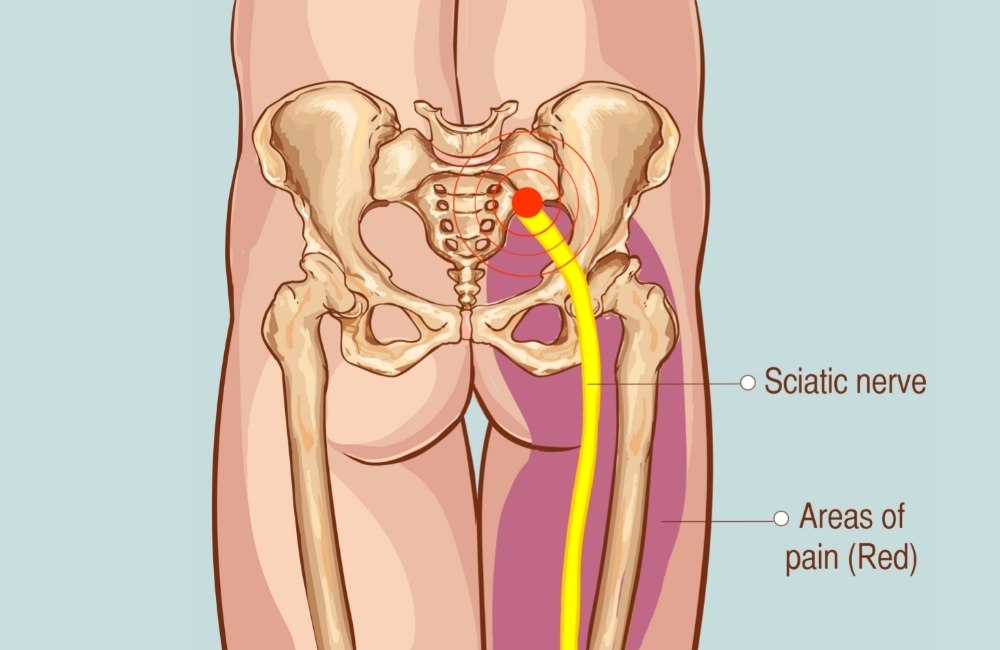
The best exercises to get immediate relief from sciatica pain!
Sciatica pain is an intense sharp pain that runs from your lower back to your leg.
Sciatic nerve pain occurs when the sciatic nerve, the longest nerve in the body gets pinched along its path.
Luckily, many cases of sciatica pain can be relieved and managed with a few simple exercises you can do at home.
What Is Sciatica Pain?
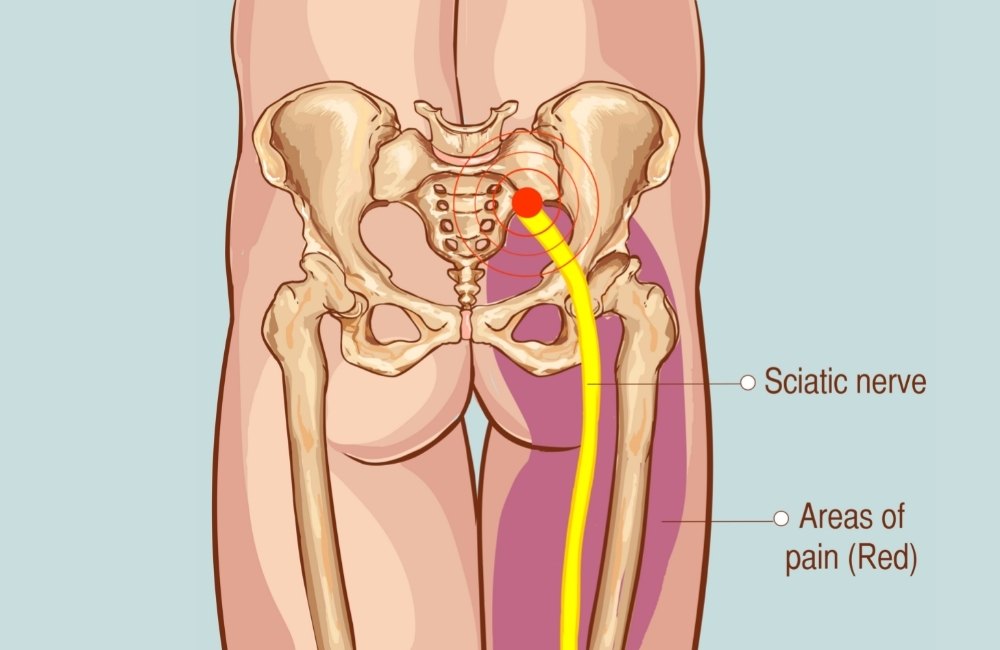
Sciatica is a nerve pain that radiates along the sciatic nerve that runs from your lower back down to the legs. This ailment involves irritation of the sciatic nerve, the longest nerve in the body.
In this article, we will review some of the best exercises to improve the symptoms of those suffering from sciatica.
You’ll also like:
This Piriformis Muscle Stretch Helps Rid of the Nerve Pain and Tension in Your Glutes and Legs
5 Best Stretches to Get Rid of Sciatica Hip and Lower Back Pain
Top 5 Exercises for Sciatica Relief
Find immediate relief from sciatica pain and stay active with these 5 simple exercises.
While some people may rely on medications, unproven treatments, or even surgery; exercise is one of the best treatments for sciatica.
Below are some of the top exercises that can help sciatica sufferers find relief from this terrible condition.
Sciatica Exercise #1: Single Knee to Chest Stretch (SKTC)
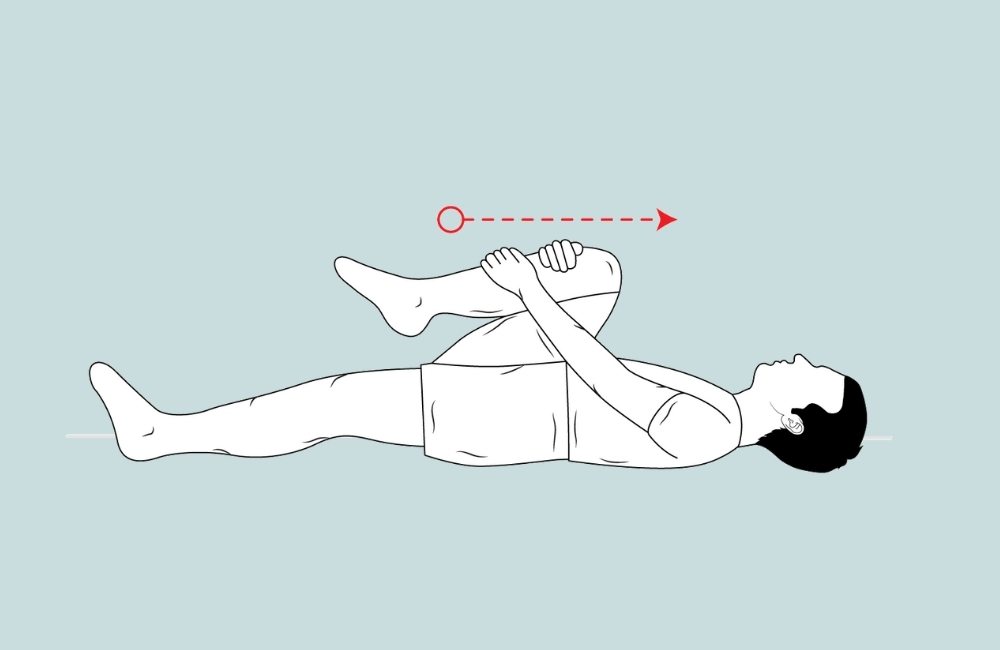
The hamstrings and glutes are intimately involved with low back pain. When these muscle groups are overly tight, patients will often experience intense sciatica symptoms.
By performing basic exercises, such as SKTC, patients can loosen up these tissues and enjoy freedom from the intense nerve pain that is characteristic of sciatica.
How to Perform
- Lie on your back, with your knees bent and your feet flat on the floor.
- Raise your right knee toward your chest.
- Grasp your right thigh with both hands and pull gently to increase the stretch.
- Hold the stretch for 30 seconds, 4 times per set, 1 set per session, and 3 sessions per week.
- Be sure to complete the stretch on the left side as well!
Sciatica Exercise #2: Bridges
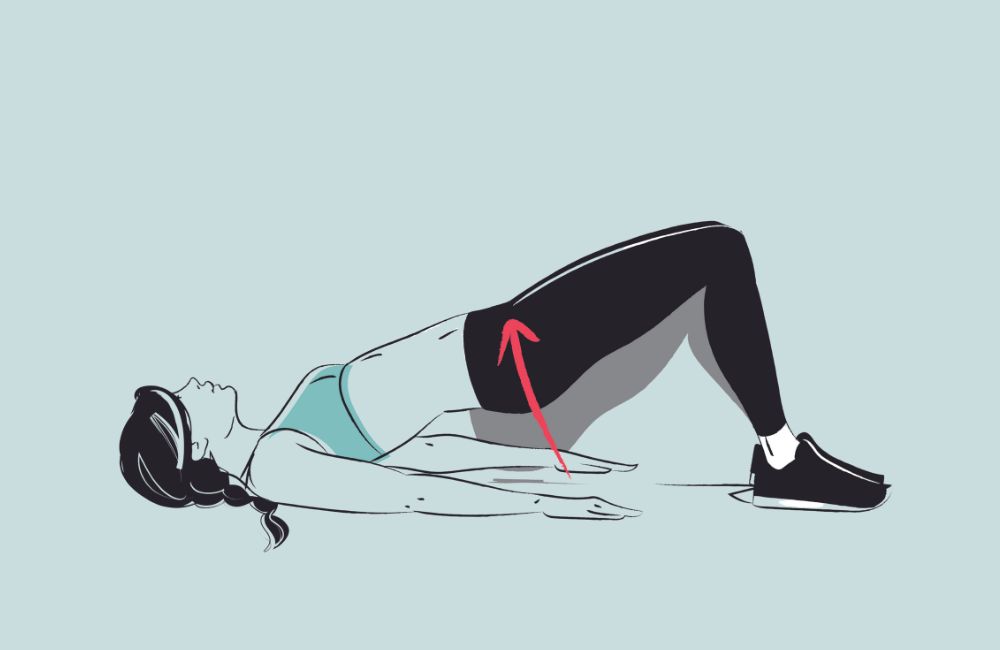
When it comes to most cases of back pain, bridges are one of the best exercises around. This movement forces the spine into extension while maintaining a non-weight-bearing position.
An extension is often touted as one of the best positions for easing back pain.
While there are some exceptions to this rule, extension (through bridges and other exercises) does seem to be extremely effective for decreasing sciatica symptoms.
How to Perform
- Lie flat on your back, with your knees bent slightly and your feet on the ground.
- Keeping your abdominal and gluteal muscles tight, press your feet into the floor and lift your buttocks off of the ground.
- Hold this position for 10 seconds, then slowly lower back down to the starting position.
- Repeat for 10 repetitions per set, 3 sets per session, and 3 sessions per week.
Sciatica Exercise #3: Quadruped Hip Extension
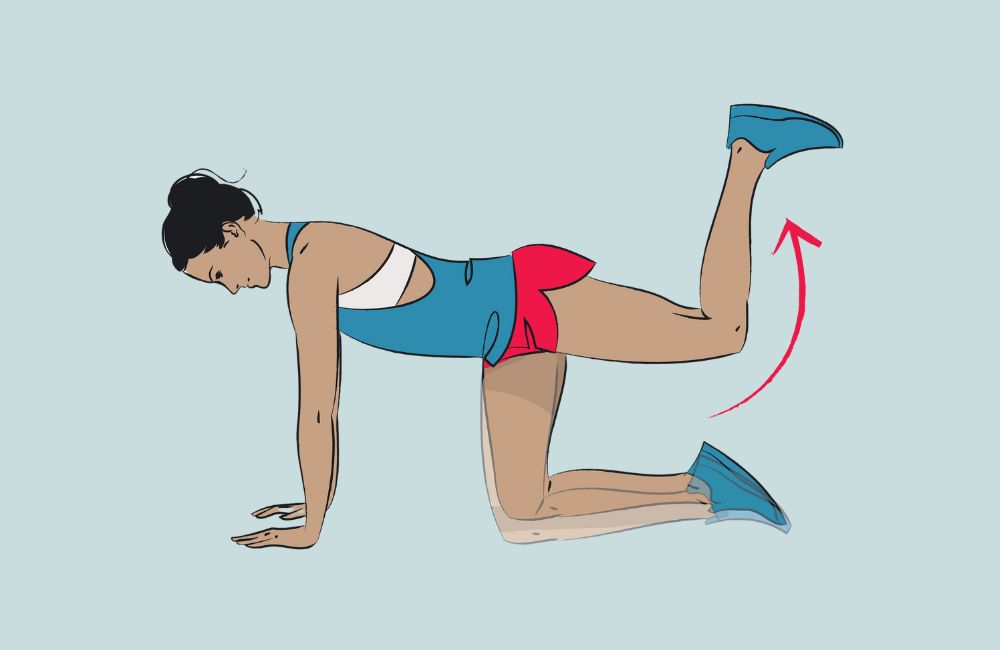
As was discussed earlier, extension exercises do wonders for low back pain.
Much like bridges, quadruped hip extensions encourage a more extended position in the hips (and slightly in the low back as well).
This exercise is perfect for anyone looking to strengthen their hip and core region.
How to Perform
- Place your hands on the floor, spaced about shoulder-width apart.
- At the same time, place both knees on the floor, spaced about hip-width apart.
- Keeping your abdominal muscles tight and your back flat, slowly straighten your right leg behind you, in line with your trunk.
- Lift your leg as high in the air as you can without losing your perfect spinal alignment, then return your knee to the ground.
- Complete 10 repetitions on each side per set, 3 sets per session, and 3 sessions per week.
Sciatica Exercise #4: Cobra
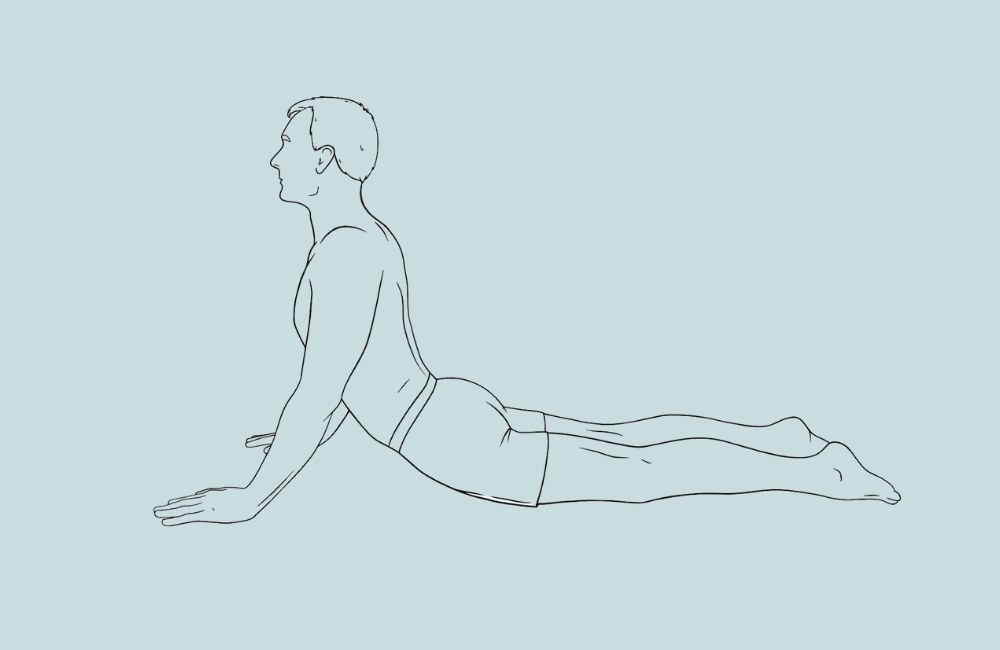
Cobra is another great extension-based exercise. This stretch opens up the chest while simultaneously stretching the abdominals and hip flexors.
Best of all, this stretch can be modified to make it even more intense. The more advanced version of the cobra is known as the upward dog, one of the classic yoga poses.
The only difference between these two stretches is that an upward dog is performed on the hands instead of the forearms.
How to Perform
- Begin by lying on your stomach.
- Place your forearms on the ground.
- Next, prop yourself up as high as you can on your elbows while keeping your hips in contact with the floor.
- Hold this position for 30 seconds and repeat 4 times per session, 3 sessions per week.
Sciatica Exercise #5: Prone Hamstring Curls
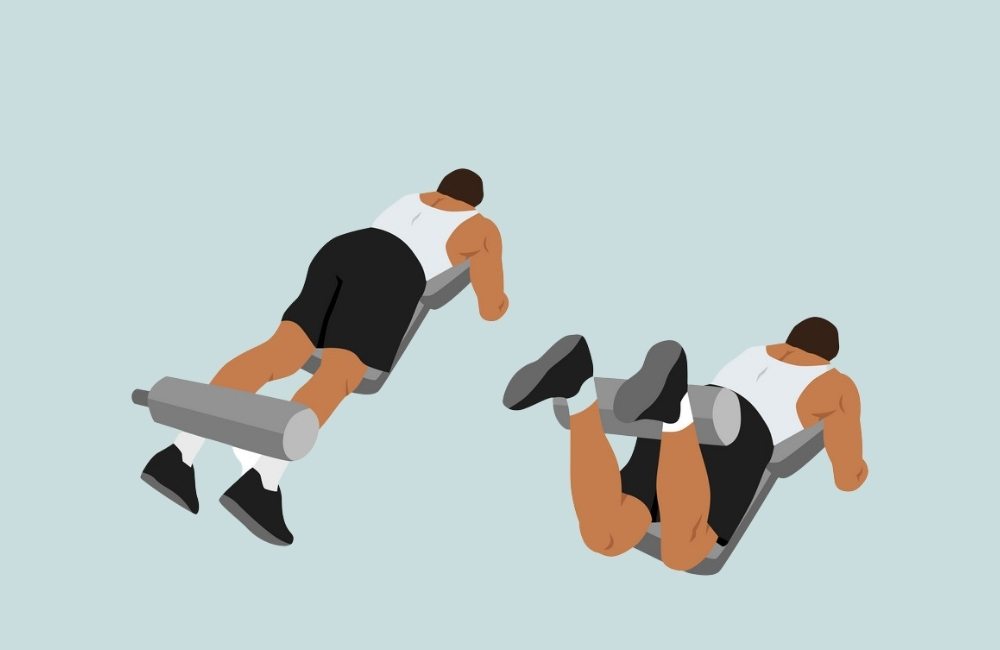
Isolating and strengthening the hamstrings is a great way to prevent and treat sciatica.
These muscles lie on the back of the thigh and they are a common area where the sciatic nerve can become trapped.
The prone hamstring curl can be performed on a machine at the gym, with bands secured to a strong surface, or with ankle weights.
How to Perform
- Lie flat on your stomach, with ankle weights secured to both lower legs.
- Slowly, bend your right knee, attempting to touch your heel to your buttocks.
- Then, return this leg to the starting position.
- Repeat for 10 repetitions per side, 3 sets per session, and 3 sessions per week.
Bonus Exercise: Squats
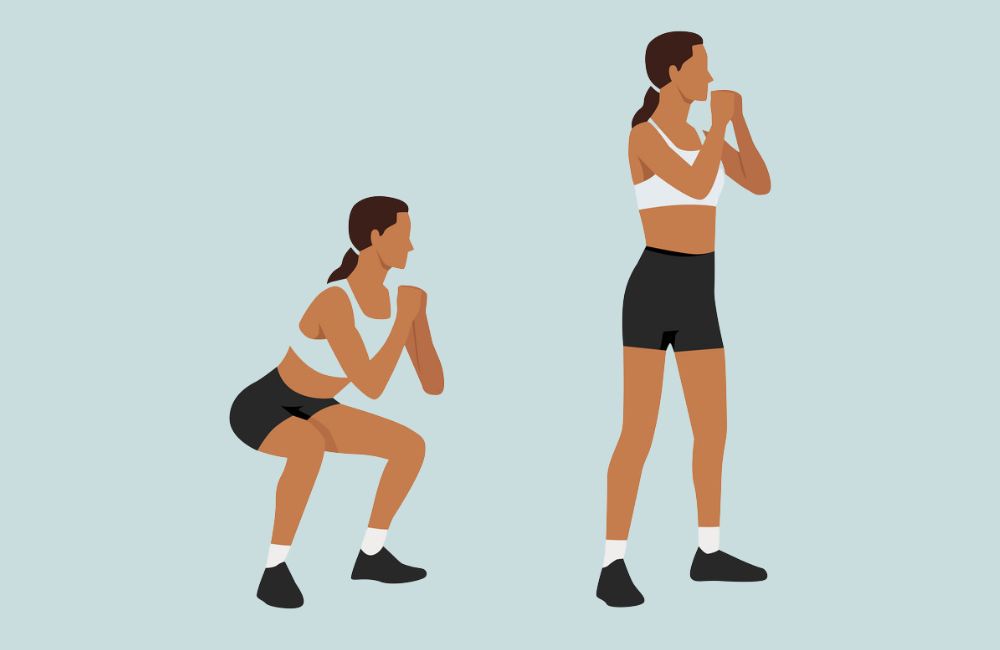
Squats are one of the best functional strengthening exercises in existence.
This move improves the stability of the legs and core. Even better, simply adding weight to the exercise can make it much harder and serves as a perfect progression as time goes by.
How to Perform
- Stand with your feet about hip-width apart.
- Slowly lower your hips down toward the ground, as if you are sitting in a chair.
- Next, contract your glutes and quads as you rise back into standing.
- Repeat for 10 repetitions per set, 3 sets per session, and 3 sessions per week.
Conclusion
Sciatica is extremely common in society today. Luckily, with a few simple exercises, you can bulletproof your legs and back. This will help to improve your symptoms and keep you from ever developing the condition in the first place. Try these movements out today!
Works Cited
- Allegri, M., Montella, S., Salici, F., Valente, A., Marchesini, M., Compagnone, C., Baciarello, M., Manferdini, M. E., & Fanelli, G. (2016). Mechanisms of low back pain: a guide for diagnosis and therapy. F1000Research, 5, F1000 Faculty Rev-1530. https://doi.org/10.12688/f1000research.8105.2
- Shiri, R., Falah-Hassani, K., Viikari-Juntura, E., & Coggon, D. (2016). Leisure-time physical activity and sciatica: A systematic review and meta-analysis. European journal of pain (London, England), 20(10), 1563–1572. https://doi.org/10.1002/ejp.885


